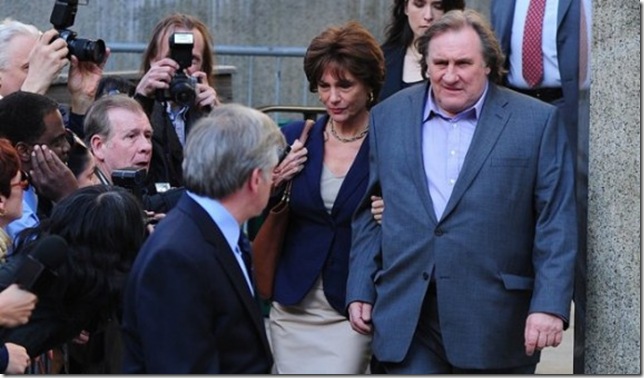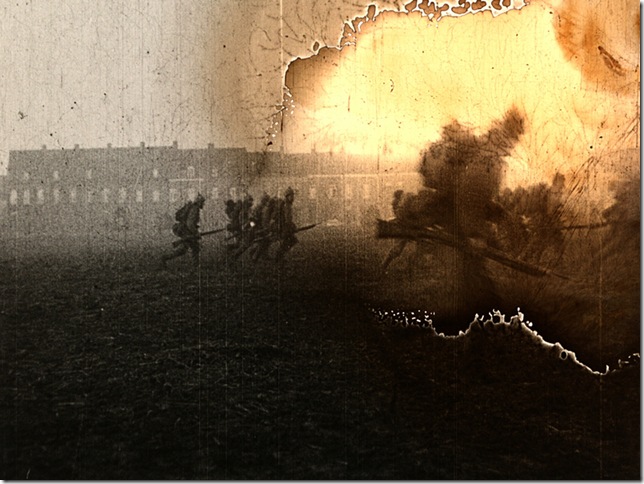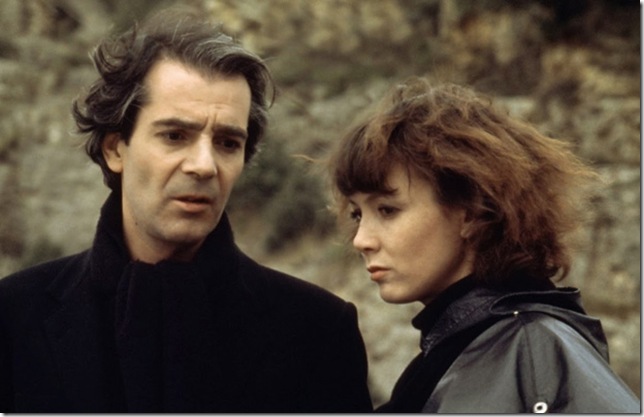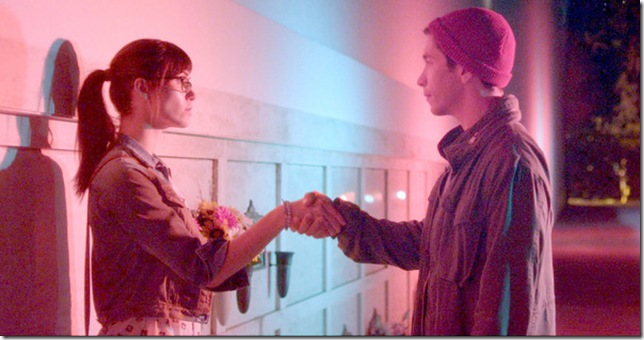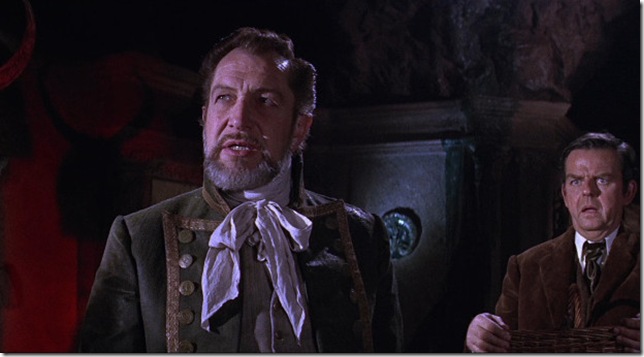Welcome to New York: Even while changing the names of everyone involved and preceding his narrative with a lengthy disclaimer, Abel Ferrara’s Welcome to New York (IFC, $18.78 DVD, $14.59 Blu-ray) borders provocatively on slander, and that’s partly what makes it so exciting.
Gérard Depardieu plays Devereaux, a French politician transparently modeled after Dominique Strauss-Kahn, whose alleged rape of hotel maid in New York briefly entered American news bubbles in 2011. Strauss-Kahn, to his credit, enjoyed a distinguished career in finance prior to his resignation, but Ferrara dispenses with political nuance, focusing on the tabloid bacchanals of Devereaux’s debauched personal life: over-the-top orgies involving colleagues, ice cream and remarkably compliant escorts. His aggression toward the hotel’s maid comes across as just another carnal conquest from a hulking sex addict — a monumental lapse of reason from a brain flooded by power, privilege and an insatiable penis.
The movie’s best scenes puncture Devereaux’s aura of invincibility. Ferrara savors the just desserts of police procedure, as pitiless New York City cops apprehend the French minister and instill a lesson in democracy by treating him like any other perp. When he complains that the handcuffs are painful, one officer quickly retorts, “They’re not designed for comfort.” Ferrara and Chris Zois’ screenplay is damn-near flawless, brimming with truth and translated on-screen with documentary veritas. Depardieu fornicates like a labored, growling animal, but his vulnerable foundering in front of his tough-as-nails wife (a superb Jacqueline Bisset) — as he lurches from defiance and victimhood to contrition and false regret — gives this great actor his meatiest and most convincing role in many years. Ferrara may disregard any notion of “balance” in this one-sided indictment in the court of public opinion, but for audiences outside DSK’s justifiably offended inner circle, Welcome to New York is an astonishing character study.
Beyond Zero: 1914-1918: Around the time D.W. Griffith was revising Civil War history for The Birth of a Nation, other early, unnamed filmmakers were documenting, without editorial comment, the war that was then happening around them. For 2014’s Beyond Zero: 1914-1918 (Icaus Films, $14.39 DVD), Bill Morrison (Decasia) appropriated previously unseen 35mm nitrate footage shot during the First World War and conceived an audiovisual poem from the fractured, melting images.
Concealed by splotches and warps and tears in the film stock, the battle scenes drift, cloudlike, across the screen like ungraspable memories, every shot epic and mysterious — a lack of visual clarity that masterfully suggests the fog of war. This dreamlike nature is intensified by the slow shutter speeds of early cinematography, so that these moving pictures, in the most literal sense of the term, adopt a hypnotic, almost hallucinatory quality.
Beyond Zero runs 40 minutes, and it moves faster than most episodes of TV drama, thanks in no small part to the engrossing soundtrack. The score, by Serbian-born composer Aleksandra Vrebalov, is performed by Kronos Quartet, and it’s alternately piercing, loping, quivering, weeping, slicing and shattering. The music complements the film’s spartan narrative, if you can even call it that. The images simply conjure the awful cause-and-effect of war: troops mass, hide in trenches, and are then lifted off a scorched battlefield in stretchers; cannons are loaded with firepower, then fields are blanketed in smoke that billows toward the heavens; bombers ascend in formation, then crash into flames.
Morrison and Vrebalov have created nothing less than a wordless death symphony whose tarnished poetry is as powerful as any fictionalized dramatization of war. And as its essential images seem to wither in front of our eyes, disappearing from the effects of time and neglect, Beyond Zero is, like everything else in Morrison’s oeuvre, a vital argument for the necessity of film preservation in an increasingly digital world.
Love Unto Death: In the first minute of this rarely seen 1984 feature from Alain Resnais (Cohen, $28.79 Blu-ray, $17.29 DVD), archaeologist Simon (Pierre Arditi) drops dead in the upstairs bedroom he shares with Elisabeth (Sabine Azéma), his girlfriend of two months. Then a miracle happens: Shortly after the couple’s doctor declares him deceased, Simon is up on his feet, a little uncertain of the evening’s developments, but otherwise healthy as an ox. Leave it up to Resnais, who commonly discovered magic in the everyday, to present us the inverse, filming a supernatural phenomenon as a matter-of-fact montage.
Simon’s return to (ab)normal has consequences. He rejects or reevaluates old friends and his career, adopting a heightened sexuality and renewed spontaneity. That is, until the events of his near-death experience gradually come into focus, and his obsession with the Other Side sends him spiraling, withdrawn and calcified, toward mortality again. And there’s still another half an hour to go.
Undoubtedly, a Hollywood director would have run with this premise quite differently, likely finding a saccharine romance more befitting this movie’s dime-store title. This is a Resnais film, though, with an arty veneer — Simon and Elisabeth’s daily lives are filmed in fragments interrupted by blackouts and extended shots of snowflakes swirling in the night sky — clouding so much moral deliberation. The nature of love and fate, the right to die on one’s own terms, and the transience of existence are addressed in due, if oblique, course, finally anticlimaxing in a series of bloated, facile discussions about God with Elisabeth’s liturgical friends.
I love Resnais plenty from beyond his grave, but forgive me for asserting that this is one the master’s more plodding features, perhaps the most visually uninteresting and ill-shaped film of his illustrious career. It’s no surprise it’s been banished to the Island of Unreleased Obscurity for so many decades. At least Cohen’s Blu-ray transfer looks gorgeous; it’s packaged as a two-disc set with Resnais’s 1983 fantasy Life is a Bed of Roses.
Day for Night: “Shooting a film is like crossing the Wild West by stagecoach. You set out hoping for a nice trip, but soon you wonder if you’ll ever reach your destination.” François Truffaut, playing a version of himself in his 1973 film Day for Night (Criterion, $22.49 Blu-ray, $16.99 DVD), offers this nugget of insight, one of countless quotable moments in this love letter to the cinema. I used to think Day for Night paled in comparison to Godard’s more radical movie about movies, Contempt, probably because Godard’s love letter to the form was written with a poison pen. Seeing Day for Night again years later in a superlative Criterion transfer — all those redder-than-red reds and bluer-than-blue blues pop out like vivacious dollops of paint on a canvas — it’s arguably aged better.
Set during the principal photography of the movie’s film within a film — a turgid May-to-December romance that once would have earned the ire of the real Truffaut — Day for Night chronicles the myriad moving parts and unexpected crises that invariably befall any production, at least in the era before digital cameras, FinalCut Pro and CGI. These range from a romantically adolescent male lead (Jean-Pierre Leaud) and a mentally unstable British starlet (Jacqueline Bisset) to the inevitable money-hemorrhaging reshoots and, eventually, an actor’s death. Anyone that walks out of the movie without a renewed appreciation for the labor involved in producing even cinematic turkeys isn’t paying attention.
While Truffaut’s New Wave pioneers like Godard obsessed themselves with theory and subtext, he evolved from formal polemicist to the maker of many a Well-Made Film, and this is one of them. Day For Night is devoid of gratuitous jump cuts or confrontational mises-en-scène. It’s a commercial film and a technically masterful one, revealing that for all those hours he spent interviewing Hitchcock, Truffaut actively listened and approached his camera accordingly.
What may strike the 21st century viewer the most about Day For Night is its Sorkinian modernism. Truffaut’s director walks and talks through the bustling set-within-a-set, fielding one pressing concern after another, while the characters orbiting around him trade barbs and witticisms while tackling their own problems. Life and art blur, backstage becomes onstage, and cinephilia remains the only constant. Cocteau, Vigo, Renoir, Hawks, Bresson, Bergman, Buñuel — all of these names and more appear like so much mental wallpaper in Day for Night. Truffaut’s character even dreams in black-and-white movie love, and it’s appropriate that when he does so, the result looks, admirably, like a documentary.
Comet: Writer-director Sam Esmail is currently wooing TV audiences and critics with his intermittently brilliant Mr. Robot, but anyone looking for signposts to his burgeoning talent in his 2014 film debut Comet (MPI, $16.85 DVD) will be hard-pressed to find any. Dell (Justin Long) and Kimberly (Emmy Rossum) meet-cute when she saves his life from an oncoming vehicle while both are queuing up at a cemetery to watch a meteor shower, because that’s the kind of movie this is. They ditch their respective partners and talk until sunrise, bantering with arch and insufferable diction.
Esmail charts the rises and falls of their relationship over a six-year period, and his hook is that his story is nonlinear, requiring a bit of catch-up to discover which Dell and Kimberly we’re watching: the ones in a hotel in Paris, where Dell secretly clutches an engagement ring; the ones in which a phone conversation reveals growing fissures in their relationship; the ones that bump into each other, supposedly by chance, on a train to Portland; and the ones that meet in the lead-up to Kimberly’s engagement to someone else. This conceit provides Esmail’s characters the opportunity to wax poetic about parallel universes and time being an illusion, ideas whose superficial faux-profundity seems to have been conceptualized between late-night bong hits.
The dialogue eventually descends into Hallmark aphorisms — delivered, initially, without irony — and laughable literary allusions (in a note of despair, Dell actually quotes Sartre’s “Hell is other people”). Even Esmail’s meretricious cinematography oozes pretention, like the digital snowballs that fall inside the Paris hotel room, presaging coitus. It’s all narrative Fabreze, sprayed onto a stinking, inconceivably greenlit movie whose empty-headed characters encapsulate the very reason some people resent privileged American millennials.
Match: In writer-director Steven Belber’s adaptation of his own play of the same name (IFC, $19.05 DVD), Patrick Stewart plays Tobias, a former ballet dancer/choreographer turned Juilliard instructor whose time away from the sprung floors involves solitary knitting, solitary cooking, and other monastic activities. His self-imposed exile is interrupted by Lisa and Mike (Carla Gugino and Matthew Lillard), visitors from Seattle: Lisa is there to interview Tobias for a dissertation about classical ballet in the 1960s, and Mike is her reticent tagalong husband. At least that’s how it seems for the first 30 minutes, until ulterior motives surface. Belber’s confrontational characters uncrate decades of shame, regret, denial and repressed memory, and eventually engage in painful lurches toward mutual healing and reconciliation.
Ballet and knitting metaphors abound in Belber’s irony-rich, if overly schematic, script, and the experience is more intellectually dense than genuinely moving. A soundtrack rife with emotional cues doesn’t help either, nor does Belber’s insistence, at least in the story’s cinematic form, to tie everything up all too nicely. Match is similar in many respects to Belber’s Tape, successfully filmed by Richard Linklater in 2001 — both pivot on psychological ambushes in contained environment, much of them captured on recording devices. Belber is not as imaginative a director as Linklater, but his camera efficiently dances around Tobias’ apartment, capturing the verbal earthquake and its attendant aftershocks. Match is probably a stellar play onstage, but in this form it’s mostly worth seeing for Stewart, who deserves to play more roles as vigorous as this verdant emotional showcase, a controlled balance of flamboyance and rigor that you can’t imagine being performed by anyone else.
War-Gods of the Deep: Director Jacques Tourneur spent his career crafting superlative genre films, but his final feature, from 1965, is probably the closest he came to creating a genuine “Mystery Theater Theater”-style B-picture. One of the strangest of the Vincent Price/Edgar Allen Poe vehicles, War-Gods of the Deep (Kino Lorber, $18.78 Blu-ray, $13.99 DVD) is set on a proverbial dark and stormy night in Cornwall in 1903.
After a body washes up on the rocky coast, Tab Hunter, looking ever the perfect Aryan specimen, searches for answers in a gothic hotel run by Susan Hart, whose token object of beauty is given little direction beyond vacant stares. Soon enough, Hart’s character is kidnapped by a pitifully costumed gill-creature, sending Hunter and sidekick David Tomlinson — an unorthodox artist who carries a pet rooster in a picnic basket — questing for answers down a hidden whirlpool that flows into an underwater city lorded over by Vincent Price’s green-puffy-shirted tyrant.
This is merely the opening act of this overplotted and inexhaustibly talky adventure, which finds our personality-starved protagonists navigating a land of immortality justified by dubious science and threatened by a submersed volcano that could erupt at any time and finally kill them all — from Price’s droll captain to the amphibious beings from Atlantis he occasionally nourishes with his disobedient slaves.
It’s confusing, dull and all over the place, with an underwater climax that would bore Jacques Cousteau to tears, but least it’s a generally unpunishing 85 minutes. The best that could be said about War-Gods of the Deep is that it doesn’t take itself seriously, but that’s a backhanded compliment: We’d all prefer the serious subversion and shadowy menace that underlines his best pictures of ’40s and ’50s, be they horror, Western or noir.
